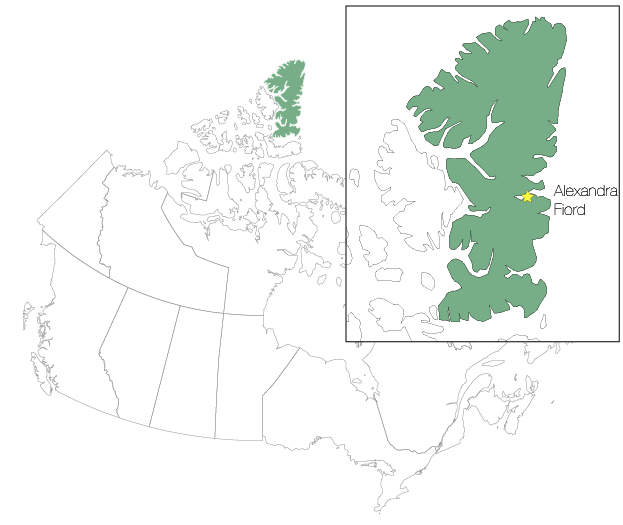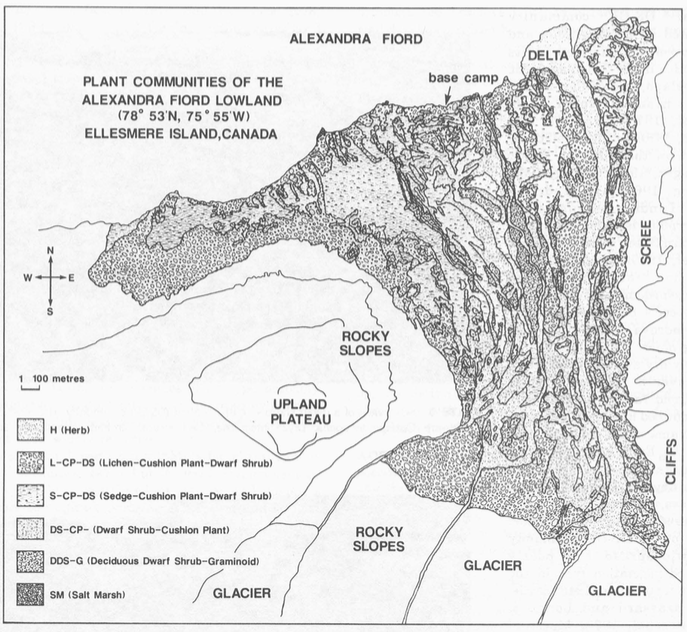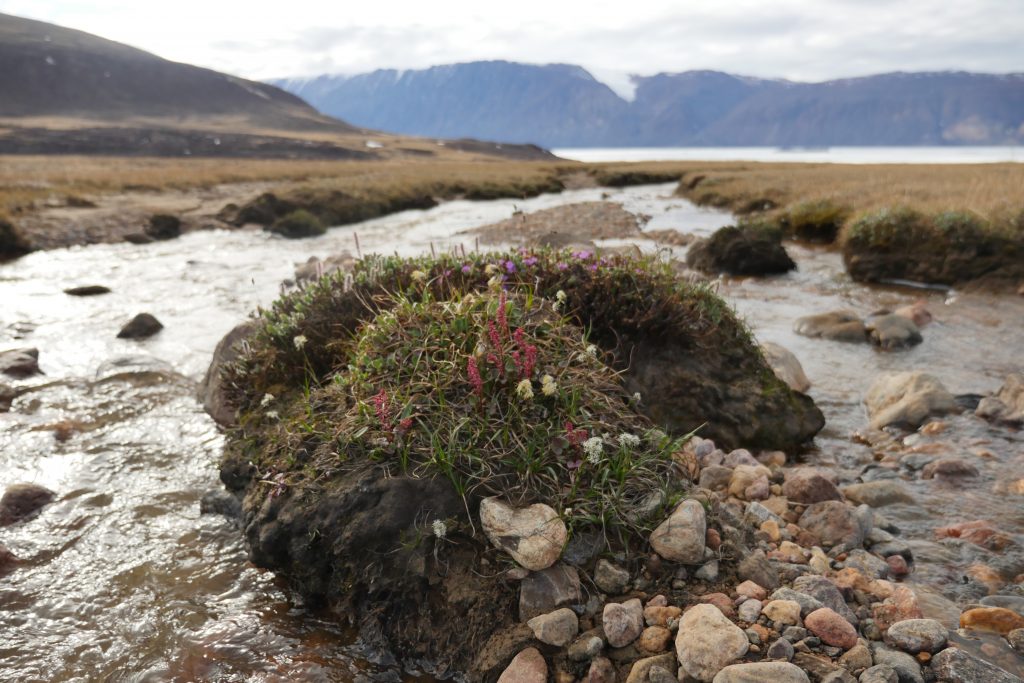Introduction
At a broad scale, the Arctic tundra biome is undergoing rapid abiotic changes as climate change impacts global temperature and precipitation regimes. Over the last 30 years, average temperature patterns across the Arctic have increased by 1 degree Celsius. This is causing a number of changes in global energy circulation. Polar amplification, a feedback process in which any change in the planet’s radiation balance tends to produce a larger change in temperature near the poles than the planetary average. This process explains why the rate at which temperatures are rising in the Arctic is twice the rate observed at lower latitudes (Overland et al., cited in Elphinstone 2016, p. 11). On top of changes to average air temperature, climate change is also resulting in warmer winters in the High and Western Arctic. The Polar Vortex is becoming weaker, and northern weather systems are changing their path, moving south and east into Russia and Eastern North America (Overland et al., cited in Elphinstone 2016, p. 11). In terms of plant growth, phenology and survival, temperature and any fluctuation from in abiotic conditions can directly affect the success of plant species (Elphinstone 2016, p. 12). The changes in temperature are already producing direct implications for plant growth in the north, due to changes in snow patterns, length of growing season, temperature, etc. and these changes will continue to influence which plant species can thrive in the High Arctic.

Alexandra Fiord, NU in context: 78.53˚N, 75.55˚W
The location we focused on for our project is Alexandra Fiord, Nunavut. This 8km2 lowland is located in the Eastern Canadian Arctic Archipelago on the east coast of Ellesmere Island. It is bordered by a fiord to the north, slopes on either side to the east and west, and glaciers to the south. It is considered a polar oasis, a relatively lush area in the midst of predominantly polar desert, the characteristic landscape of much of Canada’s Arctic. Additionally, Alexandra Fiord mysteriously lacks grazers such as Muskoxen (Ovibos moschatus) and Peary caribou (Rangifer tarandus pearyi) leaving the tundra to become overgrown. These conditions produce a unique landscape ideal for understanding tundra ecology and how future changes in climate might change ecological conditions across the Arctic.

Figure 1. Distribution of Plant Communities at Alexandra Fiord (from ‘Ecology of a Polar Oasis’ by Josef Svoboda and Bill Freedman, 1994)
Initially, we wanted to investigate how hydrology affected the common plant community associations that exist at Alexandra Fiord. The plant communities that we had hoped to look at were based on the existing plant communities from Figure 1:
• H (Herb)
• L-CP-OS (Lichen-Cushion Plant-Dwarf Shrub)
• S-CP-OS (Sedge-Cushion Plant-Dwarf Shrub)
• DS-CP(Dwarf Shrub-Cushion Plant)
• DDS-G (Deciduous Dwarf Shrub-Graminoid)
• SM (Salt Marsh)
To do this, we planned to create a hydrologic model based on a DEM that we planned on creating from air photos that were taken in July 2016. Due to time, technology and data constraints, this was not possible to analyze in a rigorous way, however, we did make progress towards developing a methodology to do this in future, and we were able to develop a three-dimensional model, an orthophoto and a digital elevation model (DEM), which is discussed as a side-project under the ‘Image Processing’ page. Additionally, the plant community data that was available was not analogous to the plant community data from Figure 1, and therefore not comparable.
Due to our constraints, we instead investigated how particular abiotic conditions such as temperature, snow cover, and solar insolation, relate to the plant communities that were extracted from an orthophoto of the area from 2000, based on field observations.
